

Phoenix Transportation Initiative
T2050
By: Cheyla Daverman
PHOENIX – Michael Daniels is a 20-year Phoenix resident who uses public transportation to get around the city, mostly to and from the supermarkets.
“I enjoy taking the bus because I can see the scenery,” Daniels said.
City officials are working to make public transportation more efficient so all citizens can utilize the transit like Daniels.
The City of Phoenix Transportation initiative (T2025) released the 2023 fiscal report, highlighting the initiative’s annual progress as it continues meeting its goals for improving citywide transportation.
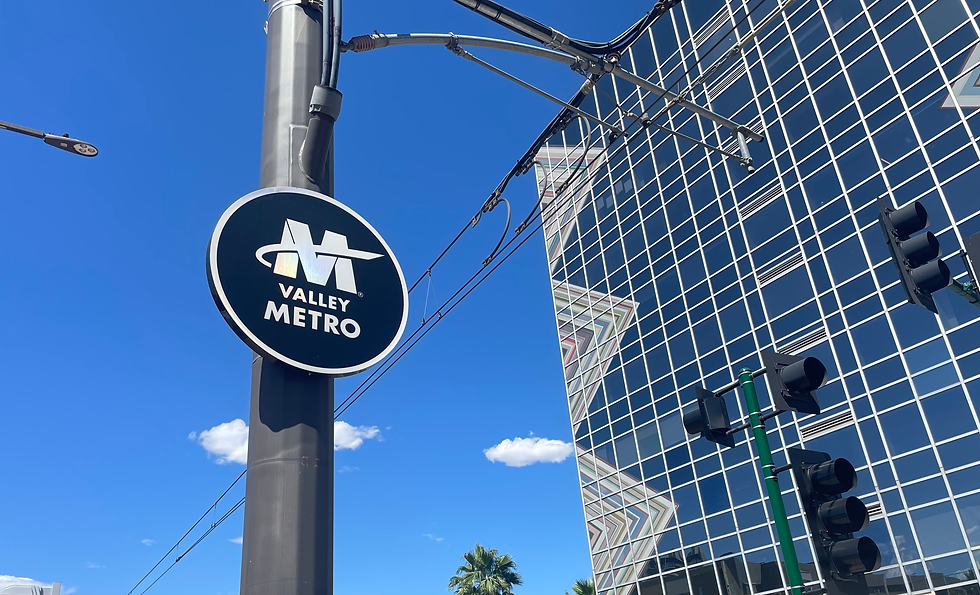
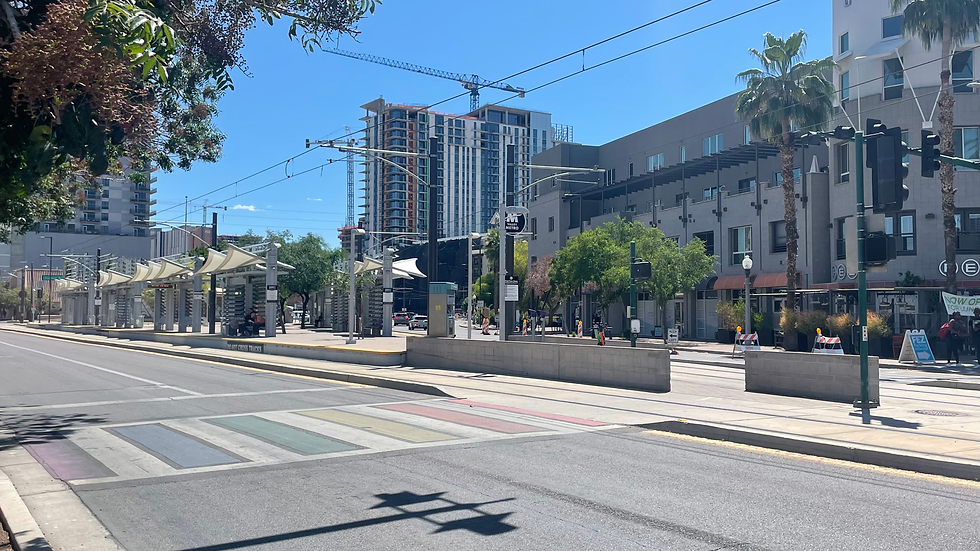
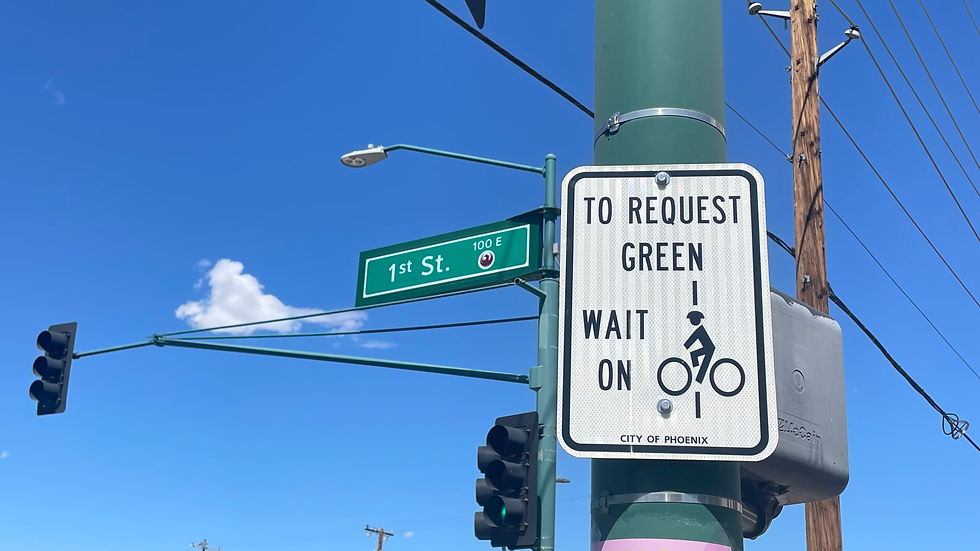

Click to view more in full screen
The Valley Metro Roosevelt and Central Station
April 2024 - Cheyla Daverman
Growing cities such as Phoenix must plan to accommodate their quickly growing populations. City officials did exactly that in 2015. The Phoenix City Council and mayor established the Citizens Transportation Commission (CTC), which oversees the eternity of the T2050 program.
The 35-year initiative kicked off in 2016 and outlines a range of goals from, tripling the light rail system to adding shade-coverings at bus stops and updating crosswalk technology. The measure specifically details that goals are designed to “optimize transit ridership, improve accessibility, and increase user satisfaction,” according to the T2050 overview
The program intends to benefit everyone who uses the city’s streets, sidewalks and transit system, according to Rick Naimark, Commission’s former vice chair, who had been with the T2050 since its conception.
New Phoenix resident, Rei Tedoco, a freshman at ASU, said that she has been enjoying using public transportation since moving to the Valley.
“I think it’s just a great opportunity,” Tedoco said. “I’m from Ohio originally so there weren’t a lot of opportunities for transportation, especially public transit. I feel like the transportation here is really quick and gets you to where you need to be, and just provides for the residences here.”
Last year marked the 7.5-year point of the initiative; the explicit accomplishments of this year were published in the fiscal report, a 40-page document that details the short-term and long-term goals, and updates of the program.
The goals maintained or reached within the last year illustrate the continued progress of T2050. In each of these categories: Transit, Streets, and Citywide, improvements have been reported to be at or above the expected progress marks established at the mission's onset. From July 1, 2022, to June 20, 2023, the major accomplishments of each division are as follows:
-
Installed 39 new bus stops
-
Installed 30.3 miles of new bike lanes
-
Constructed 10 miles of new sidewalks
-
Installed 54 mobility ramps
The 1.6-mile light rail expansion “Northwest Extension Phase II” completed 90% of overall construction completion, bringing the light rail west of Interstate 17.
T2050 emphasizes citizen-led committees that allow the communities’ voices to be heard and gauge improvements based on who is directly impacted and what will best serve them. Dermont Stevenson is a student at the Walter Cronkite School of Journalism and Mass Communications, who primarily walks and bikes around downtown Phoenix.

Fillmore Street Bike Lane in downtown Phoenix. There was a street light in seemingly with enough room around it for cyclists to navigate around on April 28, 2024.
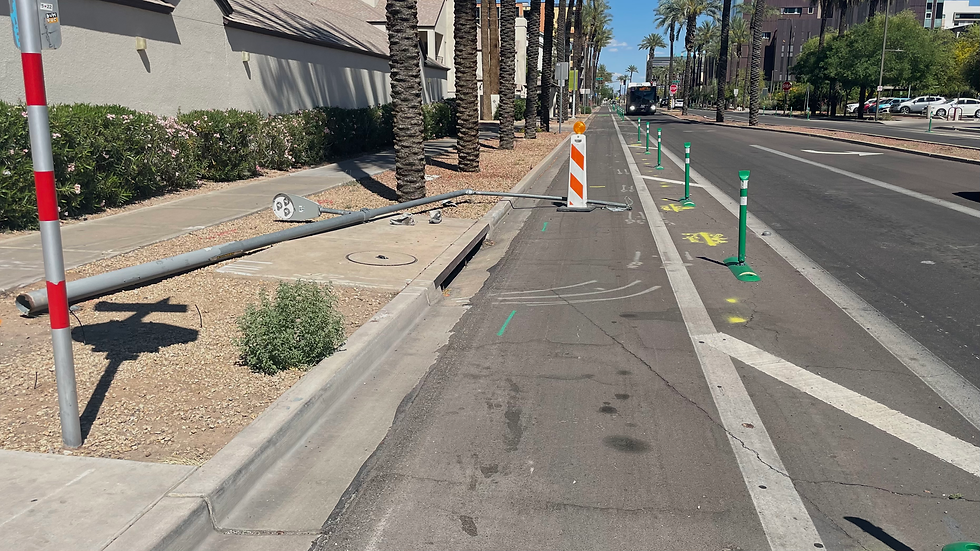

Bus 7 heads to the Fillmore St and Central Av bus stop around 2:30 p.m.

Fillmore Street Bike Lane in downtown Phoenix. There was a street light in seemingly with enough room around it for cyclists to navigate around on April 28, 2024.
Click to view more in full screen
Fillmore Street bike lane barriers offer a buffer for cyclists as they ride next to vehicles.
April 2024 - Cheyla Daverman
“I’m able to ride with a divider in between myself and other cars because the right lane is just a bike lane, and the sidewalk is still just for pedestrians,” Stevenson said.“Fillmore (Street) is an example of what I wish more of downtown Phoenix had.”
These kinds of improvements are exactly what T2050 is all about according to the goals outlined within the program. Within this fiscal year, about 40 miles of upgraded new buffered bike lanes were implemented by T2050 Street Maintenance and Improvements.
According to the Street Transportation Department, its priority is to provide a transportation network that is safe and sustainable for everyone, including pedestrians, bicyclists, and motorists. Many residents had concerns about safety and security on the metro.
Play to watch the Valley Metro in action
Passengers patiently wait at the Central and Van Buren station for an Eastbound train heading to the Roosevelt stop in the Arts District
April 2024 - Cheyla Daverman
“If they just had more people on the Metro, specifically more security at all times that were actually checking passes it would be better because if something happens then there is someone there to take care of it,” said Desiree Arzate, an ASU law student. “If not then you are just kind of on your own. So improved security would definitely make me far more comfortable and I would probably use the Metro with less hesitation.”
Residents also brought up concerns about the walkability of the city. Getting to and from stations, and bus stops can be less than ideal with poor lighting, busy crosswalks, and accommodations made for construction.

A closed sidewalk detours pedestrians across the street to continue on Fillmore.

The construction continues East down Central Ave.

This construction is also obstructing much of the sidewalk on East Pierce and Fillmore Streets.

A closed sidewalk detours pedestrians across the street to continue on Fillmore.
Along Fillmore Street and Central Ave in downtown Phoenix construction has impacted sidewalks.
April 2024 - Cheyla Daverman

Buses 7 and 10 service the temporary bus stop East Polk Street and Central Ave
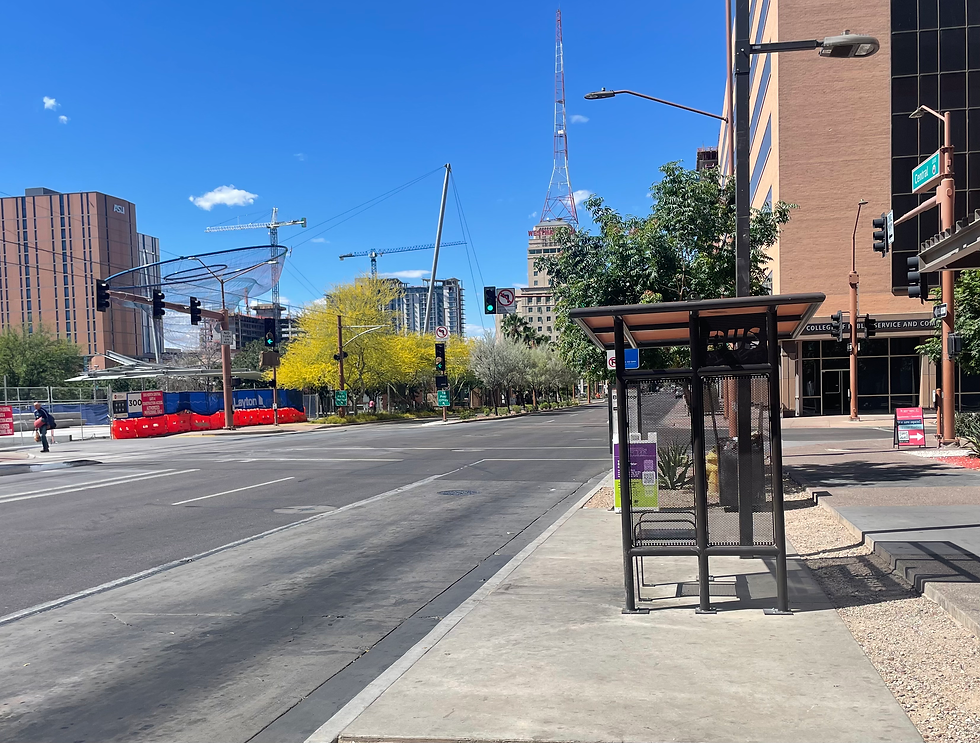
A ramp offers accessibility to get closer to the road. The bench had a little shade, but it depends on the time of day.

Bus 10 arrives at the stop around 2:48 only three minuets late.

Buses 7 and 10 service the temporary bus stop East Polk Street and Central Ave
Click to view more in full screen
Click to view more in full screen
A temporary bus top has been constructed on Central Ave across from the Metro stop
April 2024 - Cheyla Daverman
“There’s a lot of construction in downtown Phoenix so it’s definitely hard sometimes to find the bus stops because they get moved to less designated spots,” Tedoco said. “I wish there was a little more lighting for them too, just making sure our residents are safe in the city.”
If anybody from the public would like to get involved there are community outreach meetings where residents can speak to the CTC and address questions about the initiative. The 2024 CTC Meeting Calendar and further information can be found on the City of Phoenix website.